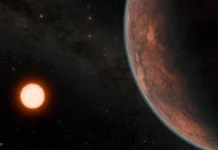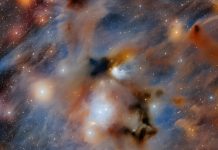
In a major scientific breakthrough, researchers have determined that an asteroid, called Kamo’oalewa, originally came from a specific crater on the moon.
This marks the first time scientists have traced an asteroid back to its lunar origin.
Kamo’oalewa, which is about half the size of the London Eye, has been circling in space for millions of years and shares a similar orbit with Earth.
The study, published in the journal Nature Astronomy, shows that this asteroid likely came from the Giordano Bruno crater on the moon’s far side.
This crater, which is 14 miles wide and about 4 million years old, is the perfect match in terms of size and age needed for such an event.
Scientists used advanced models to simulate how an impactor hitting the moon could have launched Kamo’oalewa into space.
They concluded that a massive impact would have needed to occur, capable of blasting rock from deep beneath the moon’s surface and into space.
This explains how Kamo’oalewa ended up on a path traveling around the sun alongside Earth.
Previous studies had hinted that Kamo’oalewa might have lunar origins because its material composition closely matches that of the moon, rather than typical asteroids from space.
Now, this research confirms those suspicions, showing that Kamo’oalewa is indeed a lunar fragment.
This discovery is not just a scientific curiosity but could have broader implications.
For example, understanding how asteroids can be ejected from the moon and remain intact can help scientists study the potential for life to travel between planets, a theory known as panspermia.
Moreover, the findings could aid in preparing for asteroid impacts on Earth, offering insights into how such collisions could affect our planet.
China’s upcoming Tianwen-2 mission aims to collect samples from Kamo’oalewa to verify its origin and study the effects of space weathering on lunar materials. Similarly, NASA’s NEO Surveyor mission will look for more asteroids that may also have come from the moon.
The discovery team included experts from institutions like Tsinghua University, the University of Arizona, and several other global universities, showing the importance of international collaboration in space research.
This finding not only opens a new chapter in understanding near-Earth asteroids but also enhances our knowledge of the moon’s history and its interactions with Earth.



